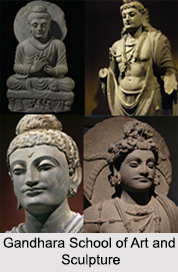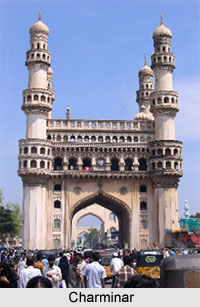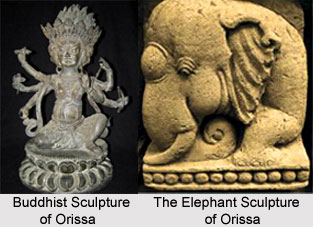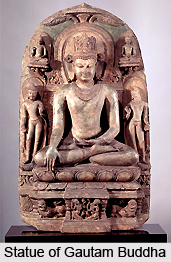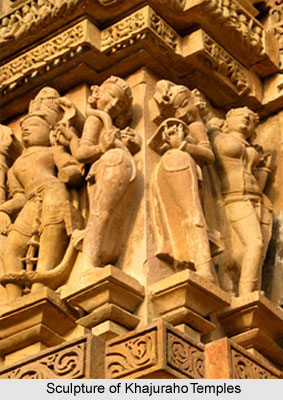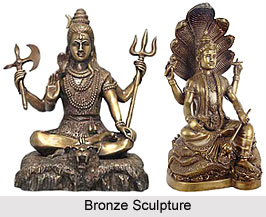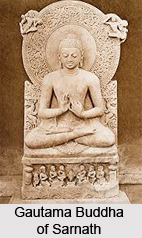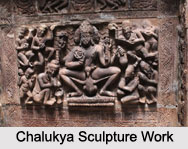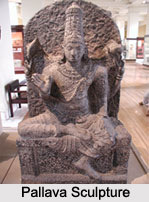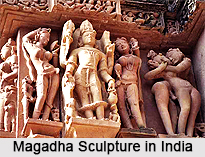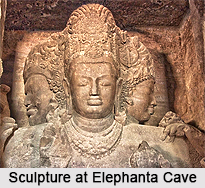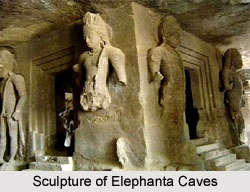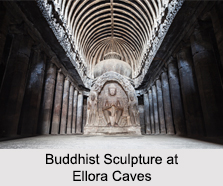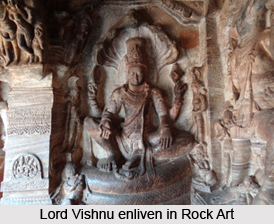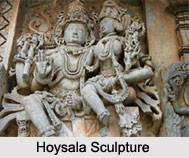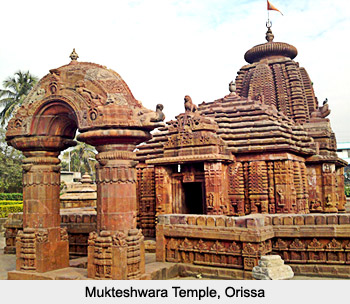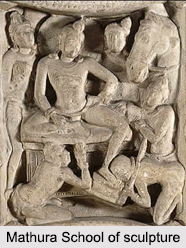 Indian Schools of Sculptures are very ancient and rich in nature. India has witnessed the art in a form of sculpture due to the patronage of various kings and migratory groups. However as far as schools of sculpture in the true sense of the term include Pala school of sculpture, Mathura school of sculpture, Gandhara school of sculpture and Amravati school of sculpture. During the first and second centuries "Buddhism" spread to the highest degree, had encouraged an improved artistic enthusiasm to illustrate the enlightened message of Buddhism. During this creative time, three main schools of sculptures in India emerged which had developed their particular styles and distinctions. These were the "Gandhara", "Mathura" and "Amaravati" schools.
Indian Schools of Sculptures are very ancient and rich in nature. India has witnessed the art in a form of sculpture due to the patronage of various kings and migratory groups. However as far as schools of sculpture in the true sense of the term include Pala school of sculpture, Mathura school of sculpture, Gandhara school of sculpture and Amravati school of sculpture. During the first and second centuries "Buddhism" spread to the highest degree, had encouraged an improved artistic enthusiasm to illustrate the enlightened message of Buddhism. During this creative time, three main schools of sculptures in India emerged which had developed their particular styles and distinctions. These were the "Gandhara", "Mathura" and "Amaravati" schools.
History of Indian Schools of Sculptures
The first identified sculpture in India is from the Indus Valley civilization, found in sites of "Mohenjodaro" and "Harappa". These include the famous small bronze male dancer. After the fall down of the Indus Valley civilization there is a little record of sculpture until the Buddhist era. The tradition of Indian colossal sculptures in stone began comparatively late, with the period of influence of Ashoka from 270 to 232 BCE and the Pillars of Ashoka, of which six survive. Large amounts of symbolic sculpture survive from the Buddhist pilgrimage stupas, above all Sanchi; these were probably developed out of a tradition using wood. The wood continued to be the major sculptural and architectural medium in Kerala all through the historical periods until the recent decades.
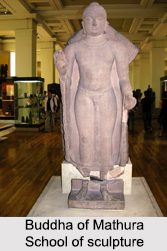 In the 2nd to 1st century BCE in far northern India, the Greco-Buddhist art of Gandhara form of sculptures became clearer, symbolizing episodes of the Buddha"s life and teachings. The pink sandstone of Hindu, Jain and Buddhist sculptures of Mathura from the 1st to 3rd centuries CE revealed both Indian traditions and Western influences and successfully established the source for succeeding Indian spiritual sculptures. The style was developed and subtle in most under the Gupta Empire (c. 320-550) covering the earlier Ellora Caves. The famous lost wax bronzes of the Chola dynasty (c. 850-1250) from south India consist of the iconic form of Shiva as Nataraja and with the huge stonework carvings of "Mahabalipuram" dating from the Pallava dynasty are very famous. The Chola period is also notable for its sculptures and bronzes. Among the existing examples in the different museums of the world and in the temples of South India, it may be seen as the several fine figures of Shiva in different forms, Vishnu and his wife Lakshmi, Shiva saints and many more.
In the 2nd to 1st century BCE in far northern India, the Greco-Buddhist art of Gandhara form of sculptures became clearer, symbolizing episodes of the Buddha"s life and teachings. The pink sandstone of Hindu, Jain and Buddhist sculptures of Mathura from the 1st to 3rd centuries CE revealed both Indian traditions and Western influences and successfully established the source for succeeding Indian spiritual sculptures. The style was developed and subtle in most under the Gupta Empire (c. 320-550) covering the earlier Ellora Caves. The famous lost wax bronzes of the Chola dynasty (c. 850-1250) from south India consist of the iconic form of Shiva as Nataraja and with the huge stonework carvings of "Mahabalipuram" dating from the Pallava dynasty are very famous. The Chola period is also notable for its sculptures and bronzes. Among the existing examples in the different museums of the world and in the temples of South India, it may be seen as the several fine figures of Shiva in different forms, Vishnu and his wife Lakshmi, Shiva saints and many more.
Different Indian Schools of Sculptures
The three important schools of Indian sculpture are as follows:
•The Gandhara School
•The Mathura School
•The Amravati School
Features of Gandhara School of Sculpture
The Gandhara School of sculpture has been called by numerous other names such as "Greco-Roman", "Greco-Buddhist" and "Indo-Greek" etc. as it visibly reveals the influence of Roman, Greek or Hellenistic art. The art boomed in the north-western boundary of the Gandhara- Pradesh region of India. The Hellenistic influence on this art is recognizable and it was inspired by Buddhism. The works of the Gandhara School have been kept at Bimaran, Hastnagar, Sakra Dheri, Shah-ji-ki-dheri, Hadda near Jalalabad and at different sites of Taxila. Most of them have been kept in the museums of Peshawar and Lahore also. Its major features are the rational depiction of human figures, differentiated muscles of the body and apparent garments. The craftsmen of this school mainly used white stone to prepare the image.
Features of the Mathura School of Sculpture
Its source has been traced back to the middle of the 2nd century B.C. It also presented the basis for further progress of the art of sculpture. The art of sculpture of the Gupta age has been accepted as a developed form of the Mathura school. The images of the Buddha of Gandhara art were copied here but in a further advanced way. The Gandhara-composition is also apparent in firm reliefs and attractive decorations. The Mathura school was openly influenced by Roman art. A large number of figures and images in stone of the Buddha and Bodhisattvas, Yaksas and Yaksnis, males and females, found at Mathura and its nearby region, have been considered as the supreme pieces of the art of sculpture. The Mathura school was possibly inspired by Jainism as there are many figures of cross-legged naked Tirthankaras in meditation were engraved. The royal statues of Kushana kings were found near Mathura. The most amazing pieces of the Mathura art are its beautiful female figures. The one unique feature of the Mathura school was the stone usage mostly spotted in red sandstone which can be found at Fatehpur Sikri near Agra.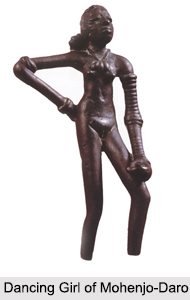
Features of the Amravati School of sculpture
The school exerted great influence not only on the later South Indian sculpture. The Amravati school provides a connection between the earlier art of Bharhut, Gaya and Sanchi on one hand and afterwards Gupta and Pallava art on the other. Images of Buddha were built and the immense stupa of Amravati was decorated with lime-stone portraying the scenes of Buddha"s life and contained by free-standing figures of Buddha but figures and statues of males and females go beyond them in number and superiority. The art of Amravati is truthfully naturalistic and aesthetic. The Amravati artists used white marble for the creation of their figures and images.
Famous Indian Schools of Sculptures
Following are some the Famous Indian Schools of Sculptures:
•A standing female figure of Amohini relief
•The standing statue of emperor Kanishka
•The statue of a slave girl
•The royal statues of Kushana kings
•The Ashoka Pillars
•Sanchi Stupa
•Kailasa Temple
•Dancing Girl of Mohenjo-Daro
•Statues of Buddha
The Indo Islamic sculptures found on the famous Muslim monuments bear testimony to the rich cultural heritage of the sub-continent. The history of Indian architecture underwent another change with the arrival of the British. The Indo-Saracenic school of architecture created ripples with its gothic styled buildings. These were later tone down with the help of the native influence as well. The features of Indo-Saracenic sculptures are still to be found on the building belonging to British India.
Today there is no strict idiom for Indian architecture and sculptures. The influence of previous schools of Indian architecture has left an indelible mark on the present. Hence even today several modern architectural plans include these elements from the past.




